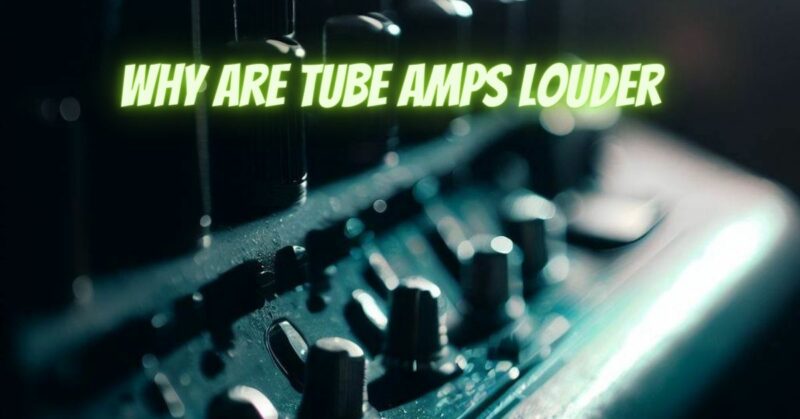Tube amplifiers have long been favored by musicians and audio enthusiasts for their unique sound characteristics and ability to produce loud and dynamic tones. One of the notable features of tube amps is their perception of being louder compared to solid-state amplifiers with similar power ratings. In this article, we delve into the factors that contribute to the perception of tube amps being louder and explore the characteristics that make them a preferred choice for many musicians.
Understanding Tube Amplifiers
Tube amplifiers, also known as valve amplifiers, use vacuum tubes (or valves) to amplify audio signals. These vacuum tubes consist of an anode, a cathode, and a control grid, which work together to amplify the input signal. Tube amps were the dominant type of amplifiers before the emergence of solid-state amplifiers, which use transistors for amplification.
Factors Contributing to the Perception of Loudness
- Harmonic Distortion: One of the key factors that contribute to the perception of tube amps being louder is the way they produce harmonic distortion. Tube amplifiers tend to introduce even-order harmonic distortion when driven hard. This type of distortion is often perceived as more pleasant and adds warmth and character to the sound. As the distortion increases, the output signal appears louder to the human ear, creating the impression of increased volume.
- Compression: Tube amps exhibit a natural compression characteristic when pushed to higher volume levels. Compression helps even out the dynamic range of the audio signal, making soft sounds louder and loud sounds more controlled. This compression effect makes the overall sound seem louder and more sustained, enhancing the perceived volume.
- Clipping: When tube amplifiers are driven into overdrive, they produce a gradual and smooth clipping of the waveform. This soft clipping is less harsh and more musical than the hard clipping found in some solid-state amplifiers. The softer clipping in tube amps can create the impression of increased loudness, especially in distorted tones.
- Harmonic Content: Tube amps often add additional harmonics to the audio signal, enriching the sound and making it more prominent. This harmonic content contributes to the perception of a fuller and louder sound.
- Reactive Load: Tube amps are typically designed with an output transformer that matches the speaker’s impedance, creating a reactive load. This load interacts with the tubes in a way that enhances the speaker’s response and the perceived loudness.
The perception of tube amps being louder is a result of their unique sound characteristics, including harmonic distortion, compression, clipping, harmonic content, and reactive load interactions. These qualities give tube amplifiers a distinct and desirable sound that is preferred by many musicians and audio enthusiasts. The subjective perception of loudness, combined with the harmonic richness and warmth, makes tube amps a sought-after choice for those seeking a dynamic and expressive audio experience. However, it’s essential to note that the loudness perception can vary depending on individual preferences and playing styles, and some solid-state amplifiers can also provide exceptional sound quality and volume levels. Ultimately, the choice between tube and solid-state amplifiers depends on personal taste, the desired tone, and the specific application.

